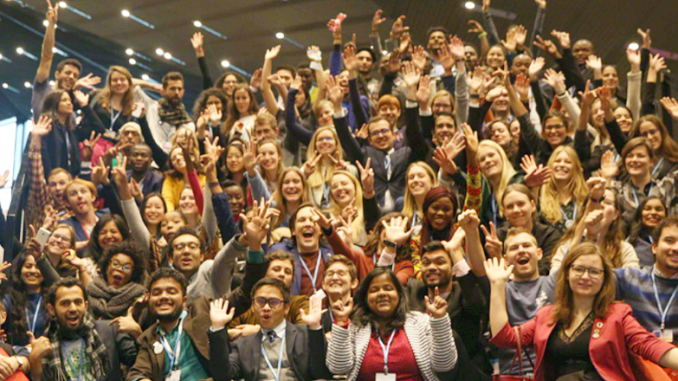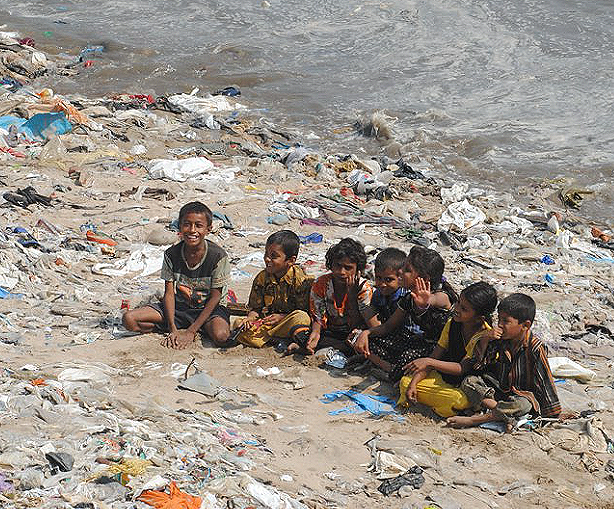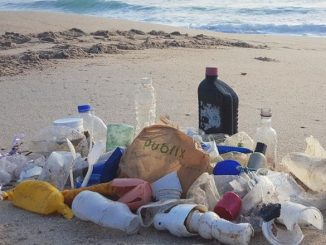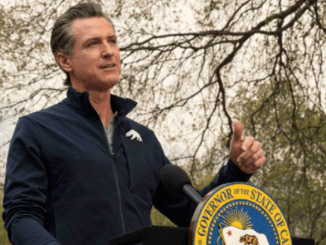
NAIROBI, Kenya, February 28, 2022 (ENS) – The world’s foremost environmental decision-making body, the United Nations Environment Assembly, opens its annual meeting today in Nairobi. For the next three days, representatives of the 193 UN Member States, business, civil society and environmental leaders from around the world will gather in-person and online for the resumed fifth session of the Assembly, informally known as UNEA 5.2 because it picks up where last year’s Assembly left off.
UNEP’s Executive Director Inger Andersen says UNEA 5.2 will focus on halting plastic pollution, stopping harmful chemicals in agriculture, and deploying nature to find sustainable development solutions.

“Over the last week, we have seen tremendous progress on negotiations towards an internationally legally binding instrument to end plastic pollution. I have complete faith that once endorsed by the Assembly, we will have something truly historic on our hands,” Andersen said.
“Ambitious action to beat plastic pollution should track the lifespan of plastic products – from source to sea – should be legally binding, accompanied by support to developing countries, backed by financing mechanisms, tracked by strong monitoring mechanisms, and incentivizing all stakeholders – including the private sector,” she explained.
The growing menace of wildfires will be central to talks at the UN Environment Assembly.
A new report by the UN Environment Programme and GRID-Arendal released ahead of the Assembly projects that climate change and land-use change will make wildfires more frequent and intense, with a global increase of extreme fires of up to 14 percent by 2030.
Extreme fires are forecast to be 30 percent more prevalent by the end of 2050 and 50 percent by the end of the century.
The report, “Spreading like Wildfire: The Rising Threat of Extraordinary Landscape Fires,” calls for a radical change in government spending on wildfires, shifting their investments from reaction and response to prevention and preparedness.
UNEP calls on governments to adopt a new “Fire Ready Formula,” with two-thirds of spending devoted to planning, prevention, preparedness, and recovery, with one third left for response. Currently, direct responses to wildfires typically receive over half of related expenditures, while planning receives less than one per cent.
To prevent fires, authors call for a combination of data and science-based monitoring systems with indigenous knowledge and for a stronger regional and international cooperation.
Resolutions on the Table
Draft resolutions proposed for discussion and adoption at UNEA-5.2 have been organized in five clusters: Plastic Pollution; Nature and Biodiversity; Chemicals, Waste and Pollution; Green Recovery and Circular Economy; and Organizational and Administrative Matters.
Plastic Pollution

The Assembly will concentrate on a producing a legally binding global agreement to address plastic pollution as a first order of business.
“Plastic pollution is a transboundary challenge that requires global action,” the draft resolution states. It is estimated that more than 8.3 billion tons of plastic has been produced since the early 1950s. About 60 percent of that plastic has ended up in either a landfill or the natural environment.
The UN Environment Assembly will consider three proposals for a global plastic pollution agreement:
- – Internationally legally binding instrument on plastic pollution | Proposed by Rwanda and Peru | Co-sponsored by 54 Member States and the EU |
- – International legally binding instrument on marine plastic pollution | Proposed by Japan | Co-sponsored by 4 Member States | 2 December 2021
See the comparison table of the two potential resolutions on plastic pollution by CIEL & EIA - – Framework for addressing plastic product pollution including single-use plastic product pollution | Proposed by India | 28 January 2022
Nature and Biodiversity
There are four draft resolutions in this cluster:
- – Sustainable Lake Management | Proposed by Indonesia | 13 December 2021 | See technical note
- – Nature-based Solutions for supporting sustainable development | Proposed by European Union and its Member States | Co-sponsored by Costa Rica, Colombia and Pakistan | 16 December 2021
- – Animal Welfare – Environment – Sustainable Development nexus | Proposed by Ghana, Burkina Faso, Pakistan, Senegal, South Sudan, Ethiopia, and Democratic Republic of Congo | 2 December 2021
- – Biodiversity and Health | Proposed by Eritrea on behalf of the Africa Group | 6 January 2022
Chemicals, Waste and Pollution
- – Sustainable Nitrogen Management | Proposed by Sri Lanka | Co-sponsored by the Philippines | 13 December 2021 | See technical note
- – Sound management of chemicals and waste | Proposed by Switzerland | 11 December 2021
- – Science-Policy Panel on chemicals, waste and pollution | Proposed by Costa Rica, Ghana, Mali, Norway, Switzerland, United Kingdom of Great Britain and Northern Ireland, and Uruguay | 11 December 2021
Green Recovery and Circular Economy
- – Sustainable and Resilient Infrastructure | Proposed by Mongolia | 21 December 2021
- – Green Approaches for a Sustainable post COVID-19 Recovery | Proposed by Eritrea on behalf of the Africa Group | 16 December 2021
- – Enhancing circular economy | Proposed by Eritrea on behalf of the Africa Group | 9 January 2022
- – Mineral Resource Governance | Proposed by Argentina, Ghana, Senegal, Switzerland, Democratic Republic of the Congo | 11 December 2021
Organizational and Administrative Matters
- – Compliance of equitable geographical representation and balance in the secretariat of UNEP | Russian Federation | 31 January 2022
- – The Future of the Global Environment Outlook | UNEP | 31 December 2021
- – Agenda, date and venue for UNEA-6 | UNEP | 6 December 2021
Side-events during three days of the Assembly include:
Reimagining Conservation: Integrating Human rights in the Development and Implementation of the Post-2020 Global Biodiversity Framework | 28 February 2022 | 11:15 – 12:45 CET | Center for Justice Governance and Environmental Action, CIEL, Conservation International, Costa Rica, Earthjustice, Forest Peoples Programme, GANHRI, Human Rights Watch, International Indian Treaty Council, IUCN CEESP, Natural Justice, OHCHR, Peru, Raoul Wallenberg Institute of Human Rights and Humanitarian Law, Slovenia, Swedbio, Sweden, UNDP, UNEP, Universal Rights Group, Women 4 biodiversity, WWF
Protecting Earth Protectors – How to ensure that environmental defenders can play their role freely and safely | Green Tent event | 28 February 2022 | 13:30 – 14:45 GMT | EEB, Global Witness, Earthworks, Reaccion Climatica (Bolivia), PHE Consortium (Ethiopia), Norwegian Forum for Environment and Development, NGO Major Group, and Women Major Group
From Recovery to Transformation: Greening Economies for People and Planet | 1 March 2022 | 11:15 – 12:45 CET | Online | PAGE, UNDP, UNEP, ILO, UNIDO, UNITAR
The After Party – An Anniversary Celebration
UNEA-5.2 will be followed by a Special Session of the UN Environment Assembly, to be held March 3 – 4. It will be devoted to the commemoration of the 50th anniversary of the creation of UNEP in 1972.

UNEP@50 is a time to reflect on the past and envision the future. It provides an opportunity to reinvigorate international cooperation and spur collective action to address the triple planetary crisis of climate change, nature and biodiversity loss, and pollution and waste. The provisional agenda is available here. Side-event of relevance to the Geneva community are highlighted below.
The Multi–Stakeholder Dialogue will be held on March 4 at 13.00 – 14.30 CET. It will facilitate an exchange of views on the overall UNEP@50 theme “Strengthening UNEP for the implementation of the environmental dimension of 2030 Agenda for Sustainable Development,” looking back at 50 years of UNEP but looking also at the expectations for the future.
The dialogues at UNEP@50 will be informed by the report “The UNEP We Want” that was prepared by the UNEP@50 Taskforce of Major Groups and Stakeholders and that presents their views and proposals on the future of UNEP.
UNEP@50 is expected to adopt a political declaration.
In her opening address to the Assembly today, Andersen said she feels the weight of history and of responsibility.
“A huge responsibility sits on our shoulders at this resumed session of the 5th Environment Assembly. A responsibility to deliver solutions to the triple planetary crisis of climate change, nature and biodiversity loss, and pollution and waste. A responsibility to provide the stewardship that will maintain the planet’s capacity to sustain humanity. A responsibility to safeguard the one thing that props up the whole sustainable development agenda: the environment.”
“This is a responsibility we must all fulfill.”
Featured image: Participants in the 2022 Youth Environment Assembly, February 2022 (Photo by Kiara Worth courtesy Earth Negotiations Bulletin)



